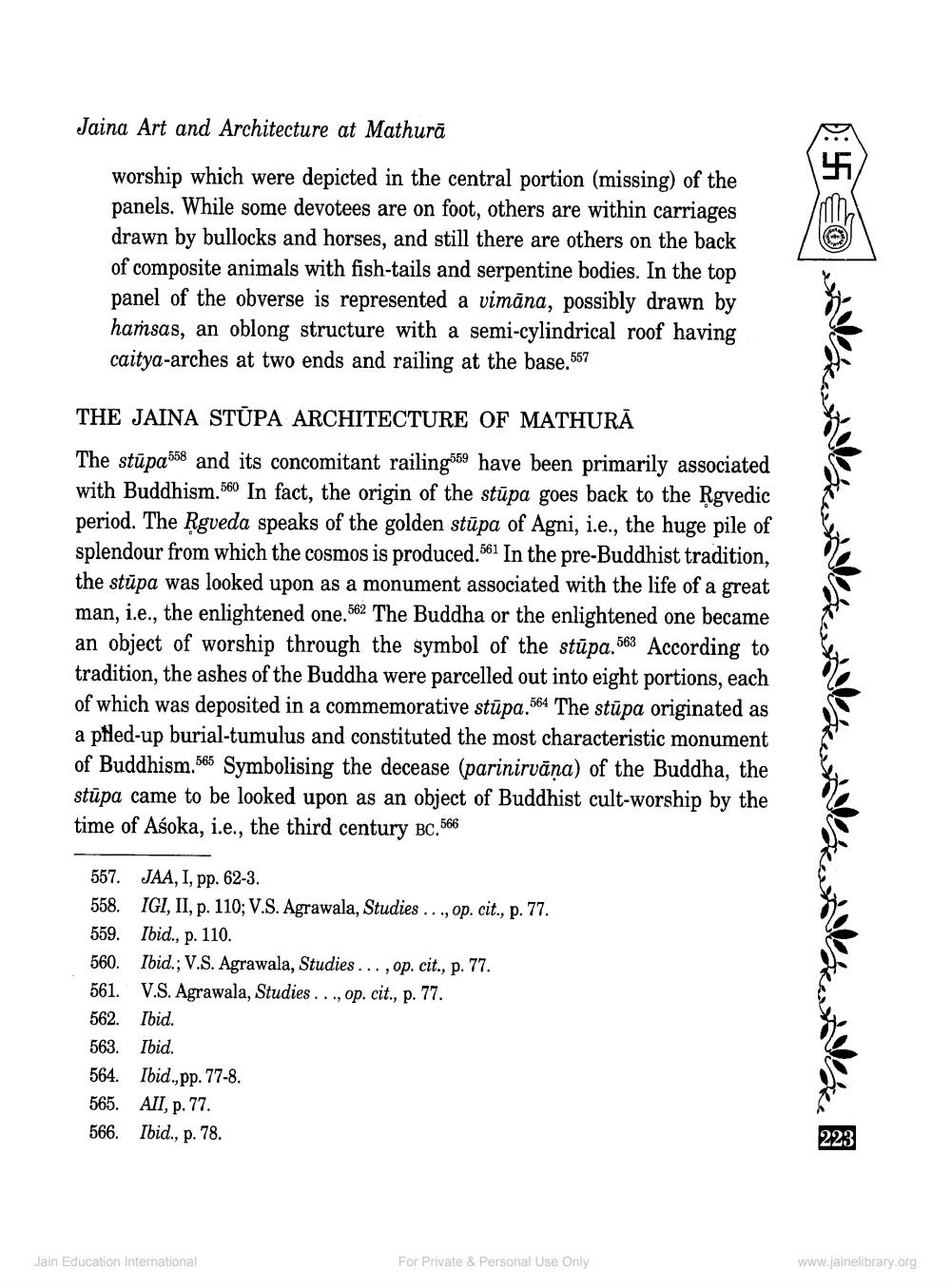________________
Jaina Art and Architecture at Mathurā
worship which were depicted in the central portion (missing) of the panels. While some devotees are on foot, others are within carriages drawn by bullocks and horses, and still there are others on the back of composite animals with fish-tails and serpentine bodies. In the top panel of the obverse is represented a vimāna, possibly drawn by haṁsas, an oblong structure with a semi-cylindrical roof having caitya-arches at two ends and railing at the base.557
THE JAINA STŪPA ARCHITECTURE OF MATHURĀ The stūpa358 and its concomitant railing559 have been primarily associated with Buddhism.560 In fact, the origin of the stūpa goes back to the Rgvedic period. The Rgveda speaks of the golden stūpa of Agni, i.e., the huge pile of splendour from which the cosmos is produced.561 In the pre-Buddhist tradition, the stūpa was looked upon as a monument associated with the life of a great man, i.e., the enlightened one. 562 The Buddha or the enlightened one became an object of worship through the symbol of the stūpa. 563 According to tradition, the ashes of the Buddha were parcelled out into eight portions, each of which was deposited in a commemorative stūpa.564 The stūpa originated as a ptled-up burial-tumulus and constituted the most characteristic monument of Buddhism.565 Symbolising the decease (parinirvāṇa) of the Buddha, the stūpa came to be looked upon as an object of Buddhist cult-worship by the time of Asoka, i.e., the third century BC. 566
557. JAA, I, pp. 62-3. 558. IGI, II, p. 110; V.S. Agrawala, Studies ..., op. cit., p. 77. 559. Ibid., p. 110. 560. Ibid.; V.S. Agrawala, Studies ..., op. cit., p. 77. 561. V.S. Agrawala, Studies . . ., op. cit., p. 77. 562. Ibid. 563. Ibid. 564. Ibid., pp. 77-8. 565. AII, p. 77. 566. Ibid., p. 78.
223
Jain Education International
For Private & Personal Use Only
www.jainelibrary.org




